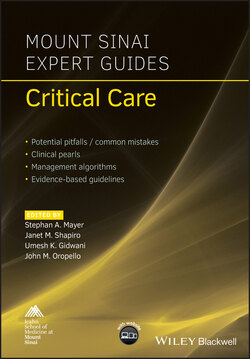Читать книгу Mount Sinai Expert Guides - Группа авторов - Страница 23
Laryngoscopy and confirmation of placement
ОглавлениеAfter ensuring proper preparation, equipment set‐up, functioning monitors, positioning and preoxygenation, the patient is typically administered an apnea‐inducing medication as well as a paralytic agent, both of which are chosen based on patient conditions as well as the clinical situation. It should also be noted that in certain conditions such as cardiac arrest, induction agents may not be necessary.
When the patient is deemed appropriately anesthetized, the laryngoscope is held in the provider’s left hand while the right hand opens the patient’s mouth using his or her thumb and index finger in a scissoring motion. The laryngoscope is then inserted into the mouth using care not to damage the patient’s lips or teeth. In the case of the curved MAC blade, the tongue is swept to the left and the tip of the blade placed in the vallecula just anterior to the epiglottis, while the straight Miller blade is inserted in midline position beneath the epiglottis. The handle of the laryngoscope is lifted upwards and anteriorly, exposing the vocal cords. The handle should never be tilted backwards as this can result in dental damage. The ETT is then inserted through the vocal cords under direct visualization. After ETT insertion, the stylet (if used) is removed as is the laryngoscope. The pilot balloon is then inflated with air using a 10 mL syringe to no more than 30 mmHg of pressure.
To confirm tracheal placement, the ETT is connected to a bag ventilation circuit and ventilated, observing bilateral chest rise, condensation in the ETT, and, most importantly, continuous end‐tidal CO2 via capnography – considered the gold standard. If continuous end‐tidal CO2 is not detected, esophageal intubation should be suspected and laryngoscopy should be reattempted.
The distal tip of the ETT should lie beyond the vocal cords but above the carina, avoiding mainstem intubation. In adults this typically correlates to 21–23 cm at the patient’s lip. A CXR should be ordered immediately after placement to confirm proper position.
Video 1.1 demonstrates a successful endotracheal intubation of a morbidly obese patient. Note the ready availability of all necessary equipment including suction, laryngoscope, ETT, and oral airway. Also, note the proper patient positioning, including approximately 35° cervical flexion aided by the use of multiple blankets to ramp the shoulders as well as slight head extension. This combination allows for a nearly straight line of sight from the open mouth to the trachea. A MAC blade is used in the left hand and it sweeps the tongue to the side after the right hand scissors the mouth open. The blade is placed in the vallecula. Force is applied in a 45° direction to visualize the glottis opening, not rocked back against the upper incisors. The ETT is directly visualized as it passes between the vocal cords. The laryngoscope is then removed, and the ETT cuff is inflated with no more than 10 mL of air. While bilateral breath sounds and presence of fog in the ETT should indicate proper placement, the gold standard for proper placement is continuous end‐tidal CO2 waveform capnography.
